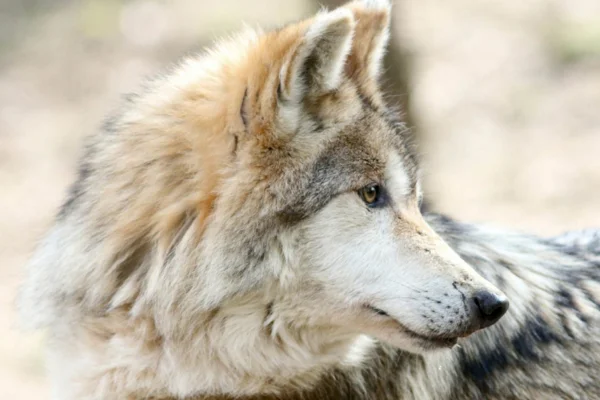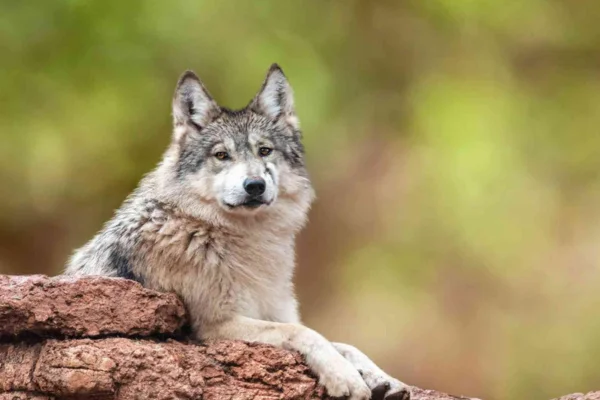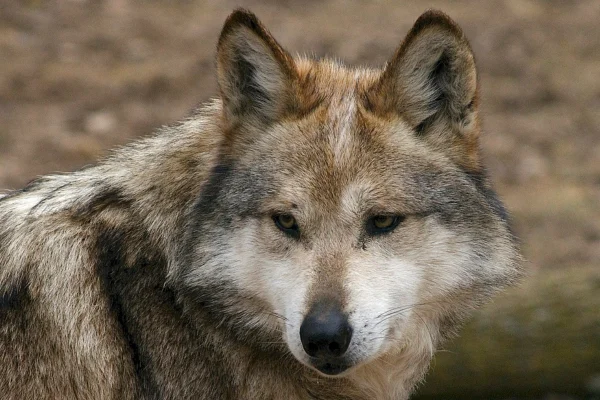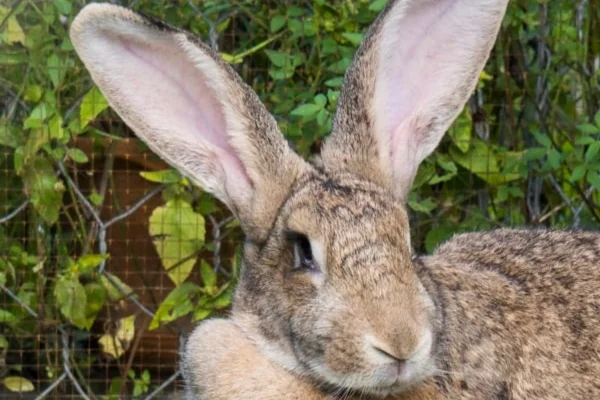The Fascinating Universe of the Mexican Wolf
The Mexican wolf (Canis lupus baileyi) is a subspecies of the gray wolf, which once dominated large swathes of the southwestern United States and Mexico. With a past full of challenges and a present marked by conservation efforts, this magnificent animal continues to capture the imagination of many. In this article, we will explore the history, characteristics, habitat, diet, behavior and conservation efforts of this emblematic predator.
History and Distribution
The Mexican wolf is one of the most endangered subspecies of gray wolf. In the past, its distribution ranged from the southern United States, including states such as Arizona, New Mexico and Texas, to the Sierra Madre Occidental in Mexico. However, due to intensive hunting and habitat loss, their populations declined dramatically throughout the 20th century.
In the 1970s, the Mexican wolf was on the verge of extinction, with only a few individuals left in the wild. In response, the governments of the United States and Mexico initiated conservation programs to save the species. In 1976, the Mexican wolf was listed as an endangered species in the United States, and captive breeding efforts began in both countries.
Contents
Physical characteristics
Mexican wolves are smaller than their northern relatives. Males generally weigh between 27 and 45 kilos, while females weigh between 22 and 40 kilos. Their coat is a mixture of gray, black, brown and white, providing effective camouflage in their natural habitat. They have long legs, which allow them to travel great distances in search of prey, and a bushy tail which helps with communication and balance.
Their senses are highly developed. Their sense of smell is exceptional, being able to detect smells over long distances, which is crucial for hunting and communicating with other members of the pack. Their hearing is also acute, allowing them to hear low-frequency sounds and detect the presence of prey or other wolves.
Habitat of the Mexican Wolf
Historically, Mexican wolves inhabited a variety of ecosystems, including temperate forests, pine forests and desert plains. Today, they are mainly found in mountainous forest areas, where there is less human interference. These habitats provide the necessary cover for hunting and raising young, as well as a variety of prey, such as deer, rabbits and small mammals.
The choice of habitat is also influenced by the availability of water. Mexican wolves generally establish their territories near water sources such as rivers and streams, which are essential for the survival of both the wolves and their prey.

Diet and Hunting Behavior
Mexican wolves are opportunistic carnivores, with a diet that varies according to the availability of prey. Their main prey are deer, wild boar, rabbits and other small mammals. They are social hunters, using cooperation within the pack to bring down larger prey. Hunting is a well-coordinated activity, where each member of the pack plays a specific role.
Communication during hunting is fundamental. Wolves use a combination of vocalizations, such as howls and barks, as well as visual and olfactory signals to coordinate their actions. This effective communication allows the pack to surround and isolate their prey, increasing their chances of success.
Mexican wolves are also known for their ability to adapt. In times of scarcity of larger prey, they don't hesitate to feed on carrion or smaller animals. This dietary flexibility is one of the reasons why they have managed to survive in varied environments and cope with adverse conditions.
Social BehaviorMexican wolves live in structured packs, usually made up of an alpha couple and their pups. The social structure of the pack is hierarchical, with the alphas leading the hunting, defending the territory and raising the pups. This well-defined social structure is essential for the survival and success of the pack.
Communication within the pack is rich and varied. In addition to howls, which can be heard over long distances and are used to coordinate activities and mark territory, wolves use a series of facial expressions and body postures to communicate. For example, a submissive wolf may lower its body and avoid eye contact with a dominant wolf.
Howls are a particularly interesting form of communication. Each wolf has a unique howl, which can be recognized by the other members of the pack. Howls are used to rally the pack, warn of danger or simply strengthen the social bonds between members.
Reproduction and Life Cycle
The mating season for Mexican wolves takes place at the end of winter. After a gestation period of approximately 63 days, the female gives birth to between four and six pups in a protected den. The pups are born blind and deaf, totally dependent on their mother for the first few days of their lives.
The first few months of a kitten's life are critical. They begin to explore the world outside the den at around three weeks of age and are weaned between six and eight weeks. During this period, all members of the pack take part in caring for the cubs, bringing food and teaching essential survival skills.
The survival of the pups depends not only on the care of the pack, but also on the availability of prey and the security of the territory. Young wolves remain with the pack until they reach sexual maturity, usually at the age of two. Some remain with their natal pack, while others may disperse in search of new territories and partners.
Conservation Challenges and Efforts
The conservation of the Mexican wolf has been a complex and challenging journey. Indiscriminate hunting, habitat destruction and conflict with cattle ranchers were the main factors that led to the near extinction of the subspecies. However, thanks to the concerted efforts of biologists, conservation organizations and governments, the Mexican wolf population has begun to recover.
Captive breeding programs have been a crucial component of these efforts. Wolves bred in captivity are carefully reintroduced into the wild, with constant monitoring to ensure their adaptation and survival. In addition, efforts have been made to educate local communities about the importance of Mexican wolf conservation and to mitigate conflicts with cattle ranchers.
The creation of ecological corridors, protected areas that allow wolves to move safely between different habitats, has also been an important strategy. These corridors help to increase the genetic diversity and resilience of wolf populations by facilitating the exchange of genes between different packs.

Ecological importance
Wolves play a crucial role in the ecosystems where they live. As top predators, they help control herbivore populations, preventing overpopulation and habitat degradation. This population control is fundamental to maintaining the health and biodiversity of ecosystems.
In addition, wolves help maintain the ecological balance by promoting the dispersal of nutrients. The carcasses left behind by wolves provide food for a variety of other species, such as birds of prey and scavenging insects. This process contributes to nutrient recycling and soil fertilization.
Future of the Mexican Wolf
Despite advances in conservation, the future of the Mexican wolf is still uncertain. Habitat fragmentation, human persecution and low genetic diversity are ongoing challenges that need to be addressed to ensure the long-term survival of the subspecies. Collaboration between governments, conservation organizations and local communities is essential to address these challenges.
Successful conservation programs require not only direct protection efforts, but also the creation of policies that promote coexistence between humans and wolves. Education and raising public awareness are key to changing negative perceptions and promoting harmonious coexistence.
Conclusion - Mexican Wolf
The Mexican wolf is a symbol of resistance and adaptation. Its history is a testament to the human capacity to destroy, but also to protect and restore. Understanding the ecological, cultural and historical importance of this magnificent animal is fundamental to ensuring its preservation for future generations. The Mexican wolf's journey from the brink of extinction to current conservation efforts is a powerful example of how human action can make a difference in protecting species and maintaining the balance of ecosystems.
Thank you for visiting us and check out our other work








